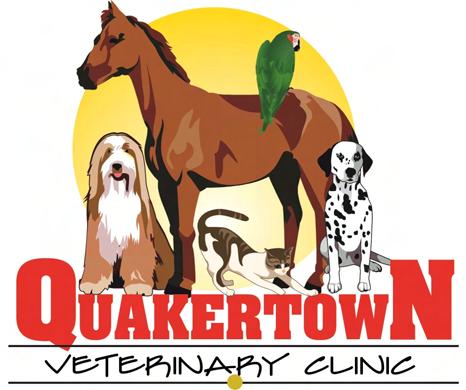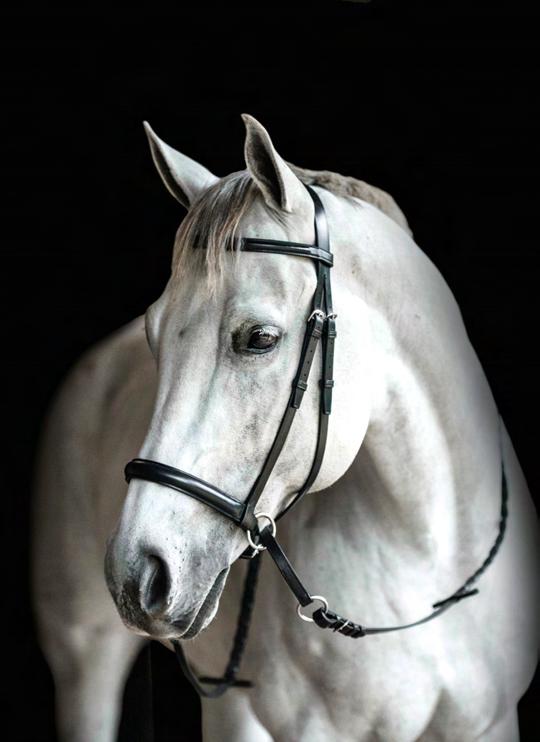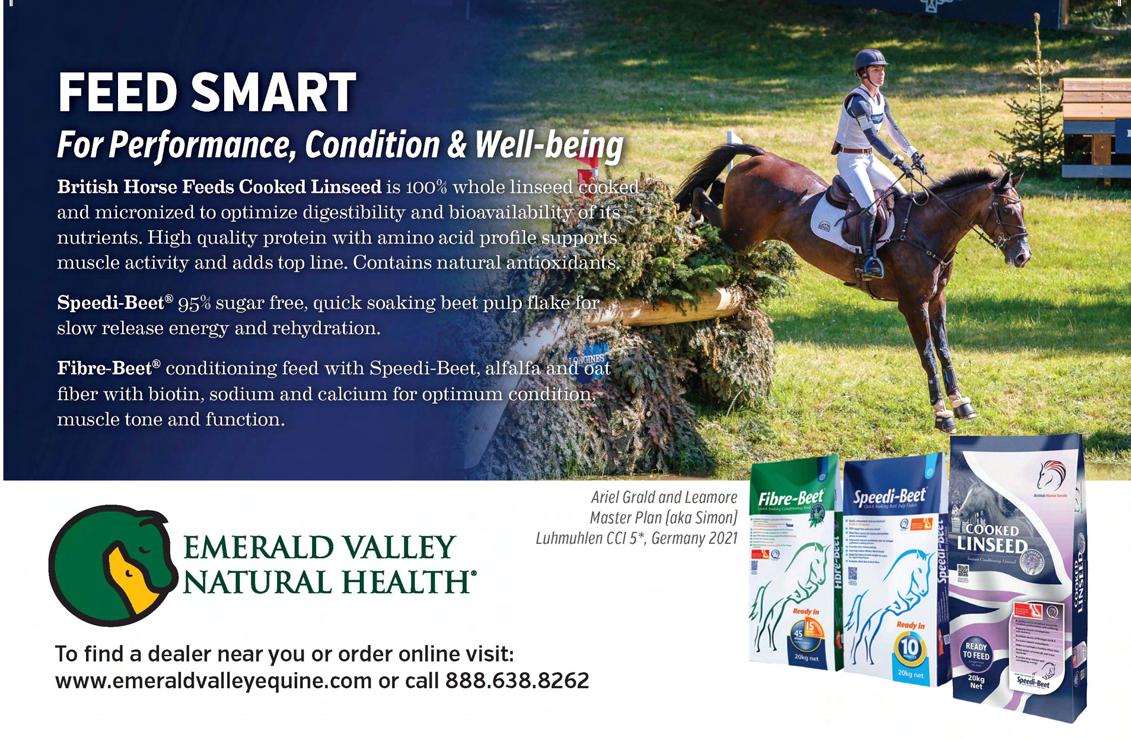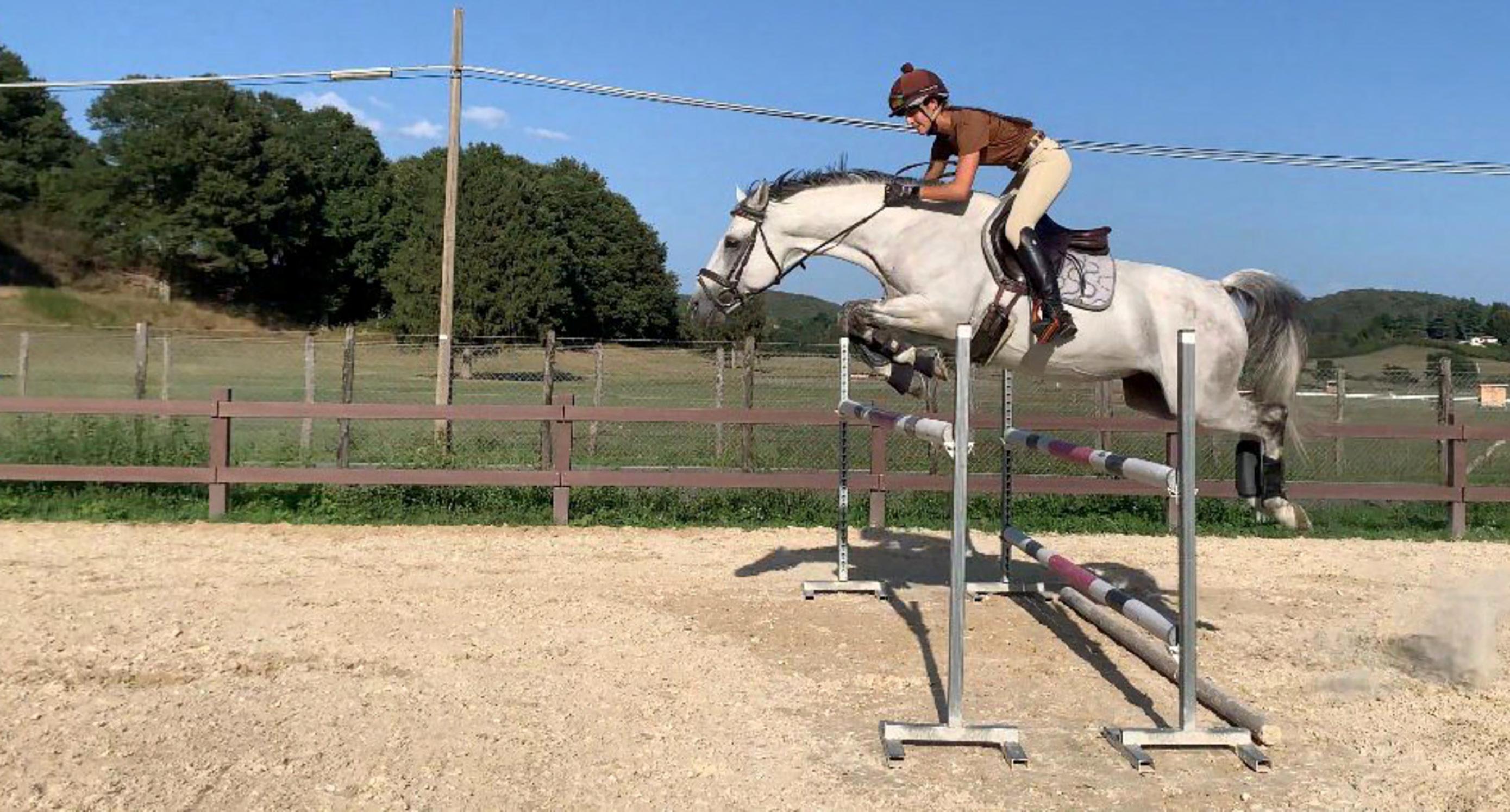
6 minute read
P &
A Good Performance Horse The Ferrari Emblem
By Alessandra Deerinck
Advertisement
The equine breeds originally were created to fulfill various human needs. While nowadays many breeds are still our partners in sports and pleasure, and so this should inspire us to safeguard the precious genetics of those horses.
The Persano breed of horses, which was created in that location, returned to its place of origin, thanks to Prince Alduino di Ventimiglia who worked very hard, and for forty years, to purely preserve the Persano breed. The reintroduction to the original place is a very important advantage for the breed because the characteristics of the territory, along with a proper nutrition, will influence the development of the foals and their phenotype.
Going back to the characteristics of the breed, the Persano excels in terms of appearance and most importantly of behavior. The conformation of the Persano is of regal appearance, and this breed has solid essential behavioral traits that were originally developed for the cavalry, for parades and for hunting with falcons. In more recent times the original qualities of endurance and agility of the Persano breed produced great jumpers, that have won gold medals at the Olympic Games in Rome with the Italian riders, Raimondo and Piero D’Inzeo and at the 2020 Olympics in three day eventing. These achievements and at the fact that the existing number of horses of this breed is small is the clear evidence of the value of their performance abilities and great genetics. Along with being great athletes nowadays, the fact that they were the cavalry horses gave them endurance and a disposition for relating to human beings, which makes these horses easy to handle, even when we talk about breeding stallions.
The Persano has been saved from extinction several times and at the moment Prince Alduino di Ventimiglia di Monteforte Lascaris, who, after a forty year quest, has succeeded in masterfully preserve the pure breed through stallions and mares that he carefully selected and acquired. As a young rider, The Prince has ridden Persano horses in competition and has reconnected with the breed while serving in the military, time in which he also began his work to preserve the breed.
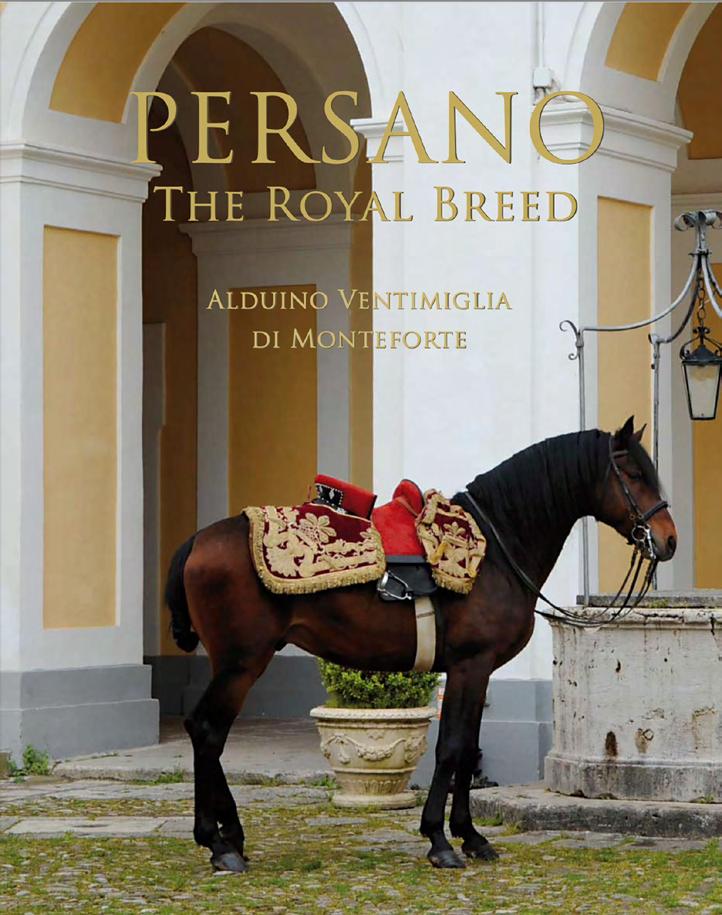
In addition to having saved the breed from extinction, Alduino di Ventimiglia is dedicated to training falcons for hunting, and founded the Italian Academy of High Flight Riders. The Prince studied Agricultural Sciences that gave him a solid knowledge in genetics, and his experimental thesis, “The Historical Evolution of the Razza Governativa di Persano” served as a reference point for several scientific researches in the years that followed. He wrote the excellent book “Persano, the Royal Breed”, and I had the privilege to connect with Alduino di Ventimiglia and hear from him about the Persano.
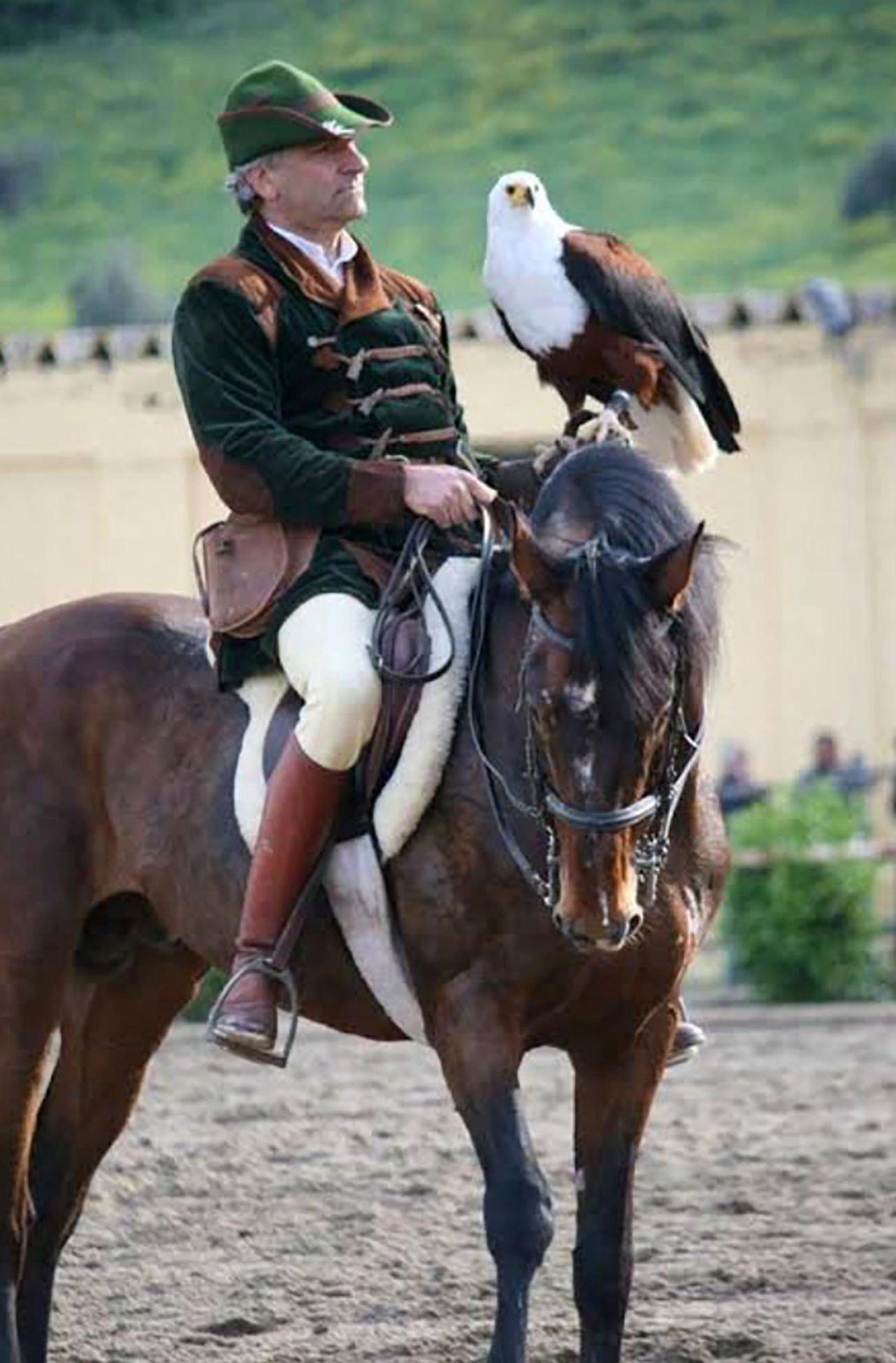
The Future of the Razza Governativa di Persano Prince Alduino di Ventimiglia di Monteforte
The Royal Breed of Persano and the Razza Governativa di Persano, created by the King of Naples and then the King of Spain, Carlo III di Borbone, is one of the most interesting breeds of horses of Europe. It is rich in history, steeped in Italian culture and aesthetics, and has been the diamond point of national equine breeding.
The Razza Governativa di Persano escaped the logic of a flattening republic, survived 270 years after its foundation, accompanying humanity for a period of its history that witnessed industrial transformation and transitioning it to the modern era.
It is my hope that this horse breed remains a symbol of pride and excellence for Italy and for all of Europe, that it will never again face extinction or the need to be rescued, and that it may gallop long into the future on the pastures of Persano, its homeland, thereby reviving a geographical area where, for centuries, it was the undisputed protagonist.


The horse of the Razza Governativa di Persano today constitutes a major opportunity for many reasons: for what it represents and has represented. In it the science of the equestrian tradition and history of the Italian Nation are concentrated.
Its nobility and courage through the centuries is unchanged, recalling deeds and adventures of extraordinary men. Faithful companion in victories and in defeats, it still runs fast around the world on the red Ferrari symbol of an intrepid adventurer and ambassador of timeless value. A sport champion, it wonderfully represents the Italian Government throughout an entire century, interrupted only by two terrible wars where it contributed as the cavalry horse.
The horse of the Razza Governativa di Persano concentrates in itself an important heritage developed over the centuries, rich in the finest “blood” of European and Mediterranean horses. This makes it extremely interesting in the creation of a new, modern sport horse.
Contact for Persano breed: persanohorse@gmail.com www.EliteEquestrianMagazine.com
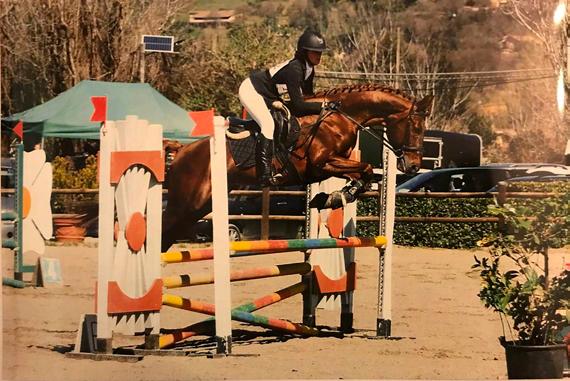
Morphological characteris�cs: Biometric data: Coat: (in order) Gray, Bay, Chestnut, Black. Height: males cm. 155-165, females 152-162 cm tolerance + - 1-2 cm Cannon: males “cm. 21-22, females “cm. 19-21. Head: slightly elongated. Profile: slightly concave in the middle third and convex in the nose. Eye: very large. Neck: well set, pyramidal. Withers: developed. Aplomb: regular. Croup: slightly sloping. Shoulders: sloping. Tendons: well detached. Foot: regular, strong hoof. Temperament: alert. Quality: Endurance and Courage. A�tude: saddle.
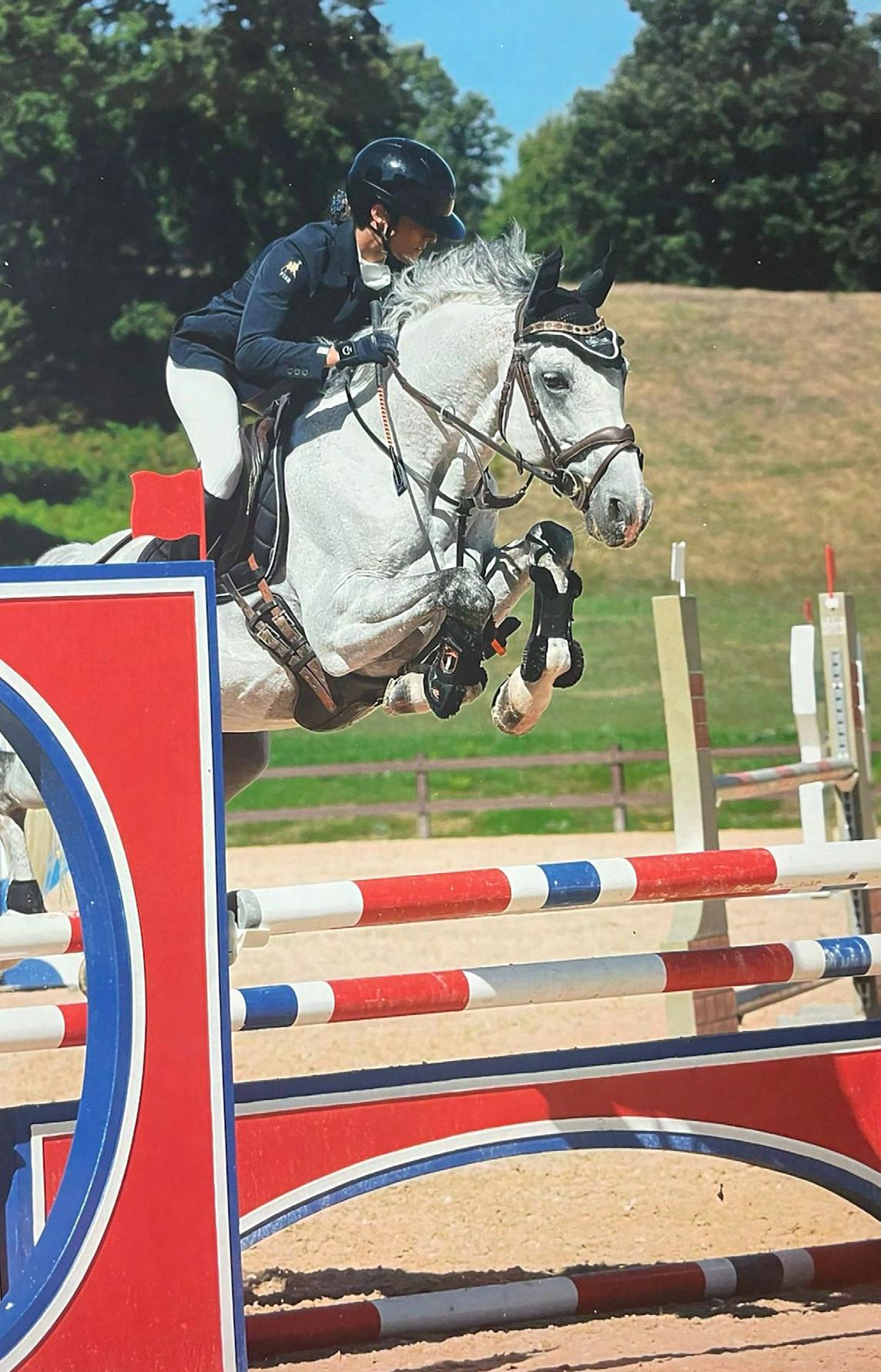
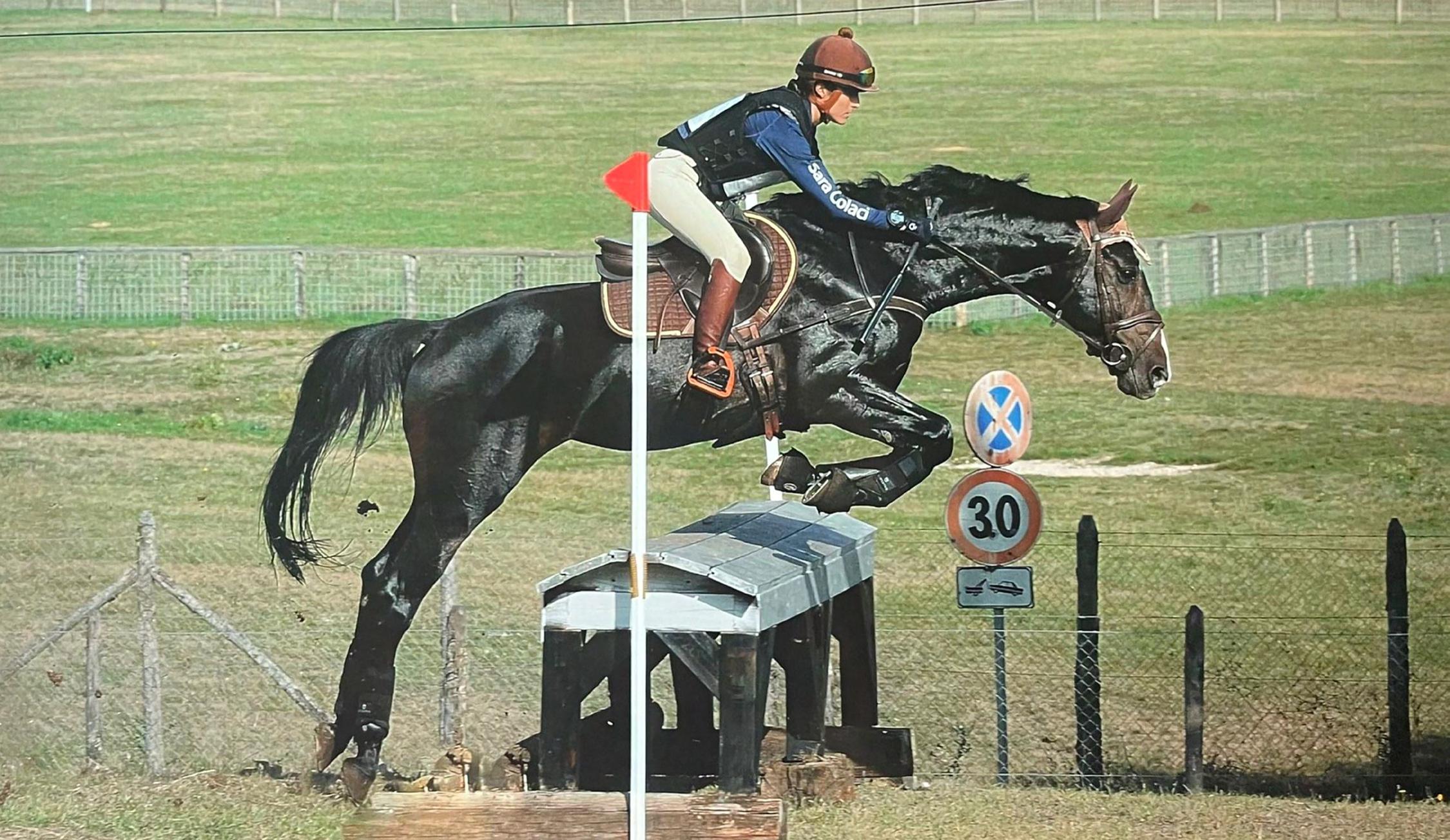


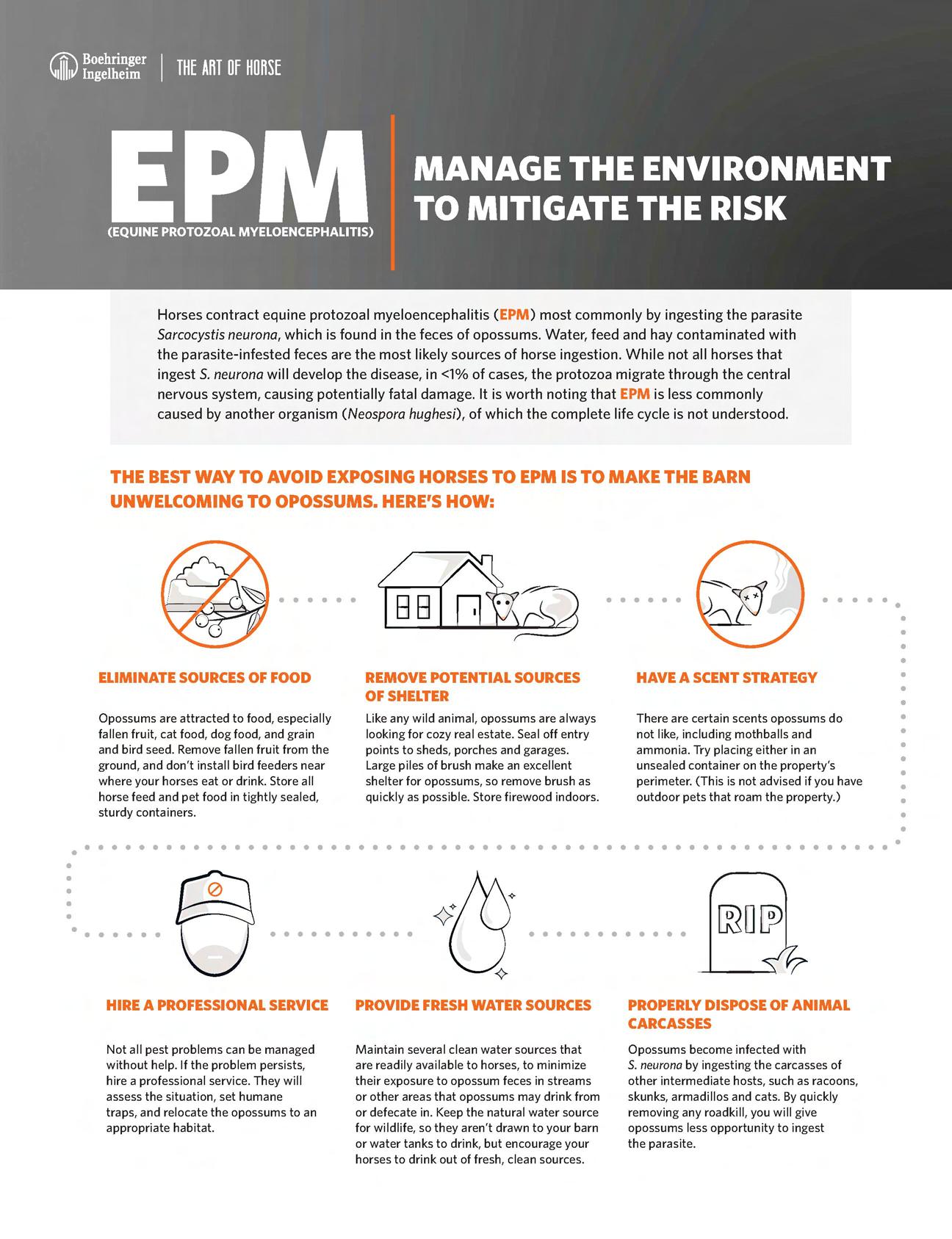
THE PROBLEM: Failure to Sweat (Anhydrosis)
►Can reduce your horse’s athletic ability by 15-20%


►Can endanger your horse’s life during stressful training schedules in heat and humidity
THE SOLUTION: ONE AC* (Feed Supplement)
►Safely balances your horse’s chemistry enabling it to sweat, naturally cooling it down.
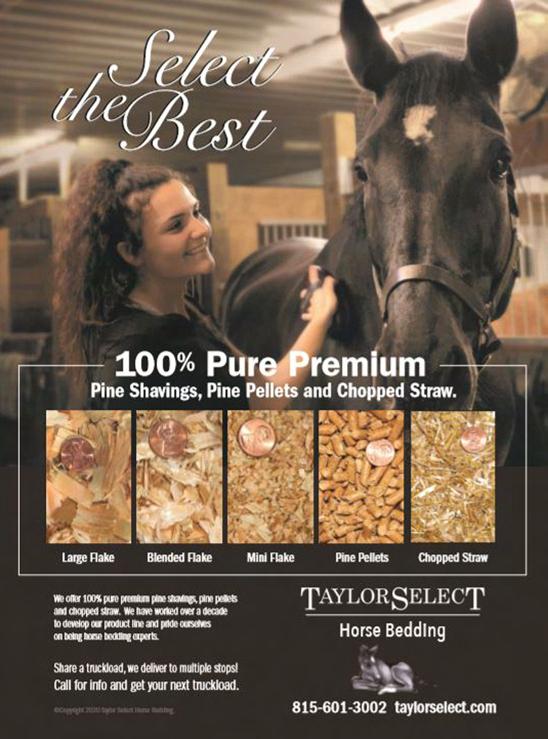
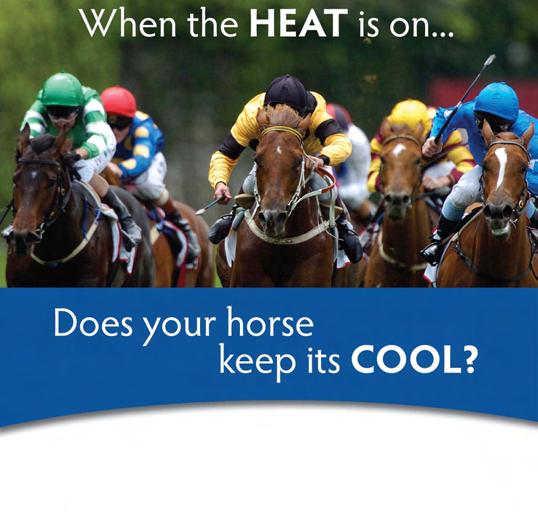
►No side effects.
►Does not register positive on drug tests,making it ideal for performance horses. MPCO-
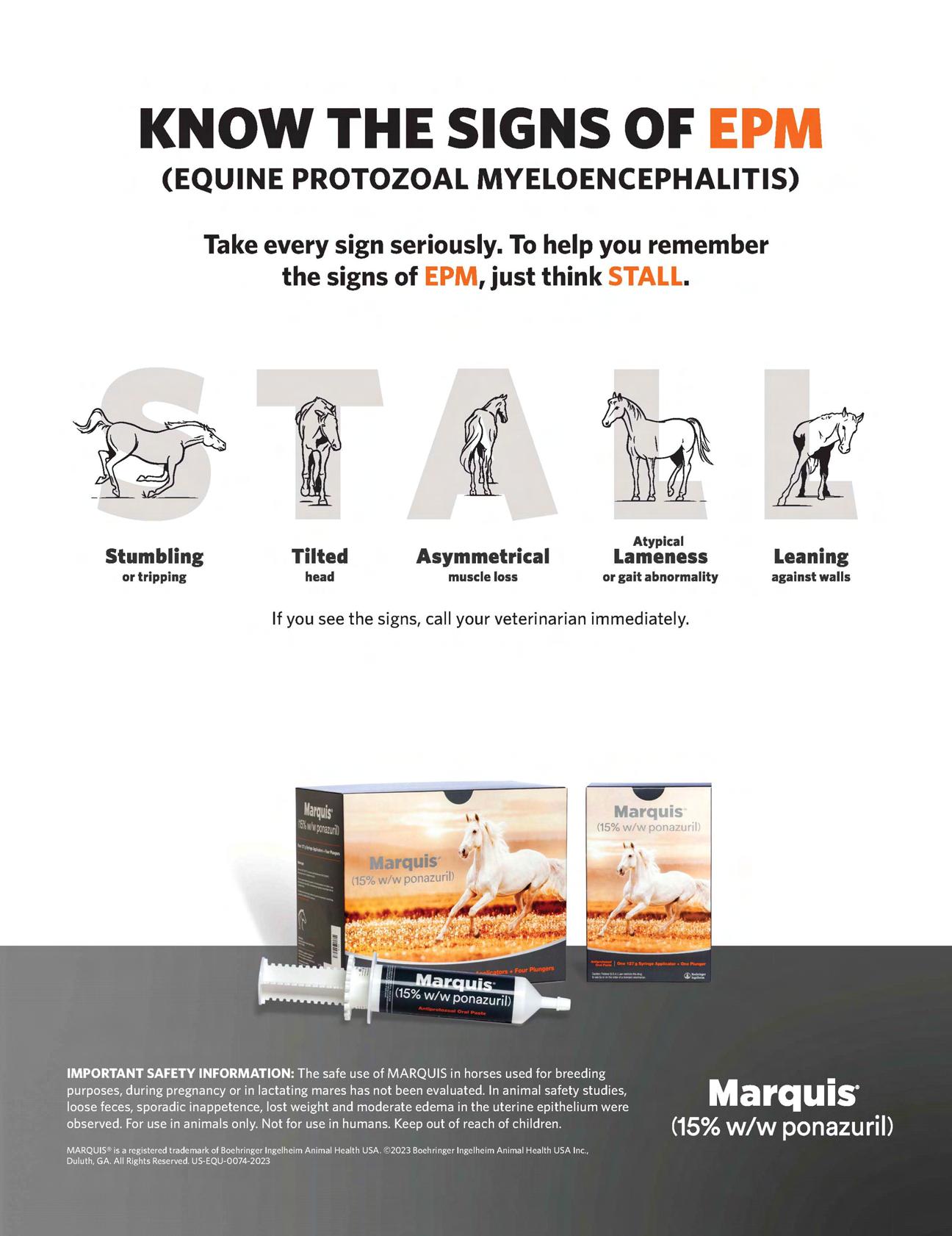


Conditioning The Whole Horse

By Shelley Onderdonk, DVM
Proper conditioning is a very important factor in getting the most out of a competition horse. There are two elements to fitness—cardiovascular and musculoskeletal. They are equally important. Both are ideally developed through long slow distance work (LSD). Imagine a triangle of time spent riding your horse. Walking is at the bottom of the triangle, comprising the vast majority of minutes spent in the saddle, particularly when “legging-up” horses after periods of rest, but also during a competition season. An hour-long walk maintains muscle tone and suppleness without any risk whatsoever. Flatting and trot sets would take up the second-most amount of time. Sports-specific training comes in near the top, and performance is at the very tip. Once attained, horses maintain their cardiovascular fitness very easily. This is one place it doesn’t help to extrapolate from humans—we lose our cardiovascular fitness in a matter of hours (24 to 48). Horses takes days or even weeks to lose theirs. They have wonderful, large hearts. The better for riding them.
Maintaining musculoskeletal fitness is more of an issue for horses— especially sport horses who are asked to do somewhat “unnatural” things. It behooves us to remember that both bones and muscle are tissues that are adaptive—that is, they react to use and pressure. They need to be stressed to become stronger. The LSD work helps with injury prevention in these tissues, as they have time to adapt and change according to the work they are asked to do. It is also so important to remember that, just like humans, horses vary a lot in their physiological capabilities. Therefore, what is an appropriate amount of conditioning for one horse does not necessarily translate into what will be appropriate for his stablemate. Programs in conditioning need to be individualized.

One of the most important distinctions to learn as a rider is distinguishing the difference between a horse that is “heavy” (not quite fit), and a horse that is “spent” (tired). They can feel the same to the rider, but they are obviously treated in an opposite manner. Knowing the back story is important—nine times out of ten I can ask what the horse has done in the last two weeks and know the answer! I love it when my client speaks Spanish, because the Spanish words for these two syndromes—pesado and pasado—even sound alike. It makes parsing the difference more real. A few recent media interviews with top eventers have interestingly veered toward this topic, with unanimity on the opinion that less is more when it comes to working their top horses. For them, overwork is more of a problem than underwork. If you have horses in a fairly strenuous program, it really helps to keep track of their exercise, especially the number of “maximum effort days” (heavy training or competing). When it is written down, it is easier for the human brain to acknowledge and assess.
Consistency is crucially important for muscle health. Some programs go so far as to test muscle enzymes on a daily basis to provide immediate feedback on how hard to push the next day. Short of this, a regular work schedule based on good training principles for your sport will go far to prevent tying up and other muscle injuries as well as optimize muscle building. A hard-and-fast rule with horses: no “weekend warriors”! Also, the easy way out is almost never the correct way. If you read an advertisement that says, “Use…for guaranteed increased performance” run the other way! It is almost never that simple!
������������������������������������������������������� ���������������������������������������� ��������������������������������������������������������������
Recipe for Success
There are many founda�onal exercises that cross disciplines in the mul�faceted world of equine sports. Cross-training can be so beneficial for mental breaks and physical strengthening. Eventers can do condi�oning like fox hunters (long medium-speed rides) or polo ponies (20-minute trot sets); dressage horses can do cavalle� and gymnas�cs; polo ponies can work ca�le; and all horses benefit from hacking on varied terrain in order to develop self-carriage. There are so many talented people in the horse world to learn from. Taking the best prac�ces from different equestrian disciplines is a recipe for success.
�����������������������������������������������������������������
